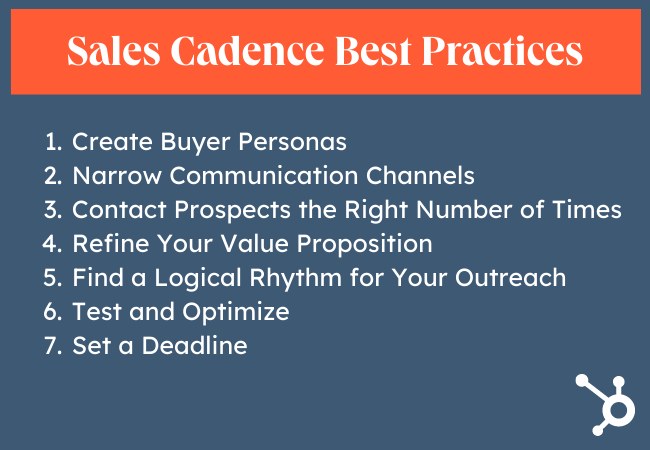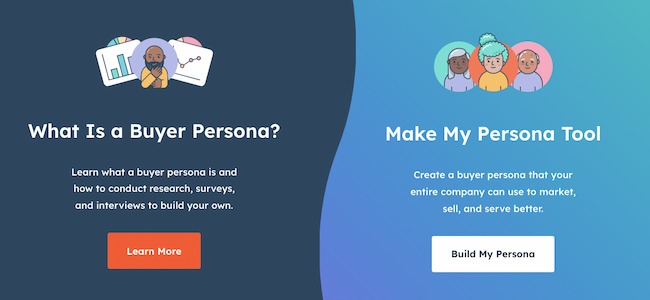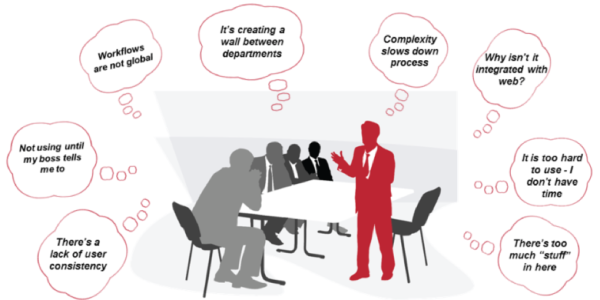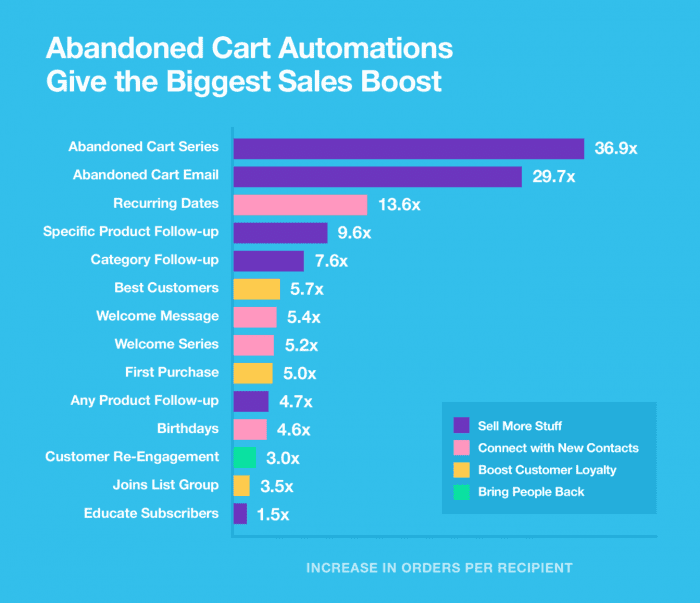There is a sales technique that, while often used by larger sales teams, isn't often used by individuals or small teams — a sales cadence.
Having a sales cadence can yield great results for you. It can help build business relationships and structure your approach to sales.

Here is a quick course on what a sales cadence is, the benefits of using one, and how to create a sales cadence, with winning examples.
Keep reading, or use the links below to jump to the section you're looking for:
Advantages of a Sales Cadence
Whether you’re a team of one or 50, implementing a well-defined sales cadence can make your client prospecting process far more efficient and effective.
Focused Effort
Chickens with their heads cut off run fast, but they don’t run far. For many of us, this all too closely resembles our haphazard approach to networking and sales efforts: lots of unstructured effort.
Sometimes sales teams call a prospect, then send them a follow-up email at once. Other times, they wait a day between the two. Sometimes they wait a day and then forget to send an email at all.
Or, in the most embarrassing cases, they lose track of where they are in the sales process and send the same email or make the same call, twice. It can be a total mess.
Sales cadences make it easier to track where you are in the sales or networking process. You always send a follow-up email or contact prospects every two days. With clearly defined rules for your sales strategy, you never risk sending the same email twice or missing steps in the sales process.
Easy Tracking = Easy Refinement
Once you start using a clearly defined sales cadence, it's much easier to track and refine your sales process. Imagine you have a five-step process you can view in your CRM. With a quick glance, you can clearly see where you are with each client and where you tend to lose contact with your prospects.
You can begin refining your approach with this information. If you can see outreach calls tend to be more effective later in the process, you can adjust your approach to call prospects only once you have established a relationship through email or on LinkedIn.
This data lets you continually optimize your sales approach and improve your results.
Scalability
You may be able to get away with using the "headless chicken" sales approach when you have one or two clients, but when you begin working with five, eight, or 10 clients at a time — or you start hiring salespeople — scalability becomes an issue.
It just isn’t possible to track where each client is in your sales process in your head or keep your sales strategy aligned across a small team without structure.
Having a clearly defined sales cadence solves that scalability issue. Not only is it easier for you to organize and track where your different prospects are in your sales funnel, but it also becomes easier to enlist others to work with you.
A simple one-page flowchart is enough to illustrate to any new sales reps you hire the exact sales strategy you use, and they can begin making calls and interacting with clients at once.
Sales Cadence Examples
Sales cadences vary greatly between individuals, teams, and organizations. However, the frequency, method of contact, and time of contact are always structured and consistent.
Consistency and structure are what make sales cadences so effective.

These examples will show how anyone can benefit from using a sales cadence to define their sales process.
Check out this AMA session with Sales Hacker CEO Max Altschuler. The following is an example of one of the sales cadences he’s used to connect with prospects:
-
Day 1: Email/InMail
-
Day 3: Email in the morning, call in the afternoon
-
Day 5: Call in the morning, call with a voicemail in the afternoon
-
Day 7: Email in the morning, call in the afternoon with a voicemail
-
Day 10: Email and call in the morning
How I Used a Sales Cadence to Land Meetings with 11 of the Largest Ecommerce Players in the World
A client once asked me to help them increase their sales and industry presence in the U.K. market, specifically with the top 200 fashion and apparel brands and retailers in the region.
Unlike in my home country of Brazil, I had only five business connections in the U.K. To succeed in this market, I would need to essentially grow my network from scratch.
Despite my lack of contacts, I grew my network to over 300 connections, many of which were major players in ecommerce and apparel in the U.K., Dubai, Turkey, and Romania.
These contacts led to 11 meetings with some of the largest ecommerce players in the world -- and a grand total of $2.13 million in new business opportunities in my client’s pipeline.
I want to share some practical advice about developing your own sales cadence — from developing your target lead list to actually landing a client. To do that, I will share the process that resulted in my meetings with some of the world's biggest players in ecommerce — Farfetch, Debenhams, and Ted Baker, to name a few.
1. Preparation
People often go down the wrong path from the beginning. They don’t have a clear sense of their target clients, so they go after any and every prospect they can think of. This strategy isn’t efficient. Why spend time chasing prospects you're not well-equipped to serve?
Before doing anything else, you need to make sure you understand who your prospects are. Here are a few questions you can answer for yourself to narrow down who you want to target:
- What industry is my product the best fit for?
- How mature are my ideal clients? Are they startups? Funded companies? Multi-national?
- Which regions do I want to focus on?
This isn’t an exhaustive list, but it should help you start to define whom you want to focus your efforts on.
Once you have an idea of whom you want to target, it's critical to know some basic characteristics about the prospect. To do this, you should know at least the following about your targets:
- Company name
- Number of employees
- Company location
- Dream internal contact (who would you most want to talk to given the chance?)
- Realistic contact (who do you think you can realistically talk to?)
- How many people you want to target for the account (the sum of #4 and #5)
- What social media sites do the company and your contacts from #4 and #5 use?
The answers to these questions will help you spend less time chasing bad leads.
When you contact prospects, show that you're writing specifically to them and have something unique to offer. To do that, you have to understand everything you can about them and their business. Before your first outreach, know the following about your prospect (if not more):
- Their pain points
- What they might be afraid of
- The changes taking place in their market
- Their competitors
The answers to the questions from the previous three sections will help you stand out from the crowd when you contact your prospective client.
You will be able to show you understand their business, cite specific challenges they may be facing, and contact prospects through the channels that give you the highest likelihood for success.
I believe marketing and sales should always be in full alignment. Building a persona can be a daunting task. If you’re hitting any blockers, I'd suggest you use HubSpot's free tool for making personas.
2. Developing Sales Cadences
Now that I know who my targets are, what their industry is like, and the best ways to reach them, it’s time to start the conversation. Below is the general sales cadence I use, which involves both old-school methods (calling) and new ones (social media).
-
Total Companies Contacted: 90
-
Total Responses: 21
-
Positive Responses — agreed to a meeting or demo): 11
-
Negative: 10
-
In-Progress: 11
-
No Response: 58
- 2-3 contact points/professionals per company
- On average, I needed 46 touches per contact
That is an average as some companies like Debenhams (70-plus touches) or Farfetch (300-plus touches) required more effort to get a meeting.
Here’s the day-by-day breakdown:
.jpg?width=450&height=1125&name=The%20Final%20Sales%20cadence%20infographic%20(1).jpg)
This sales cadence lets me contact many contacts and multiple accounts in a repeatable, efficient, and varied way. If you want great results, put one in place as soon as possible using the example above or the steps below.
1. Set a Goal for Your Sales Cadence
An effective sales cadence is relevant to your prospect, business goals, and resources. To create a cadence that hits on every point, start with goal-setting.
Many sales objectives are broad, like increasing qualified lead numbers. But to create a great sales cadence you need something more specific. Think about the smaller steps that lead up to the point your prospect becomes a qualified lead.
For example, do you want more form completions on a product landing page? Do you want to schedule more demos?
Starting with a specific goal also makes it easier to see from your audience's perspective. This helps you make educated guesses to create the best experience for each prospect.
2. Figure Out the Target Audiences for Your Goal
Once your goal is set, choose a target audience. Factors to group your audience might include:
- Industry
- Company size
- Sales territory
- Job title
- Psychographic factors
- Behavioral data
You can collect insights from your team, review market research, or analyze your analytics to decide on your target audience.
At this stage, it's also a good idea to figure out who you want to avoid attracting for this goal. This process can help you figure out which prospects are a right fit for a goal, and which prospects could slow down progress.
3. Segment Leads Based on Personas
Once you've separated your audience based on other factors, you may want to further segment your list. At this stage, it's a good idea to segment by buyer persona.
It's ideal to refine your segments as much as you can because it helps you personalize your sales cadences. You can use persona cues to refine design choices, timing, CTAs, and more.
4. Decide on Communication Channels for Each Segment
Once you have your segments complete, it's time to choose their ideal channels for sales outreach. A cadence is usually multichannel. The more engaged your segment is with each channel, the more likely it is to be effective as a whole.
For example, a sales cadence that includes messaging on TikTok is great for selling to B2C bakers and chefs. But B2B baking suppliers may be more active on LinkedIn.
Start with the channel that supports your ultimate business goal best. Then work backward to choose supporting channels that can help guide prospects to that final step.
5. Build a Sales Cadence for Each Segment
Once your research is complete, you can begin creating your sales cadences. Your cadence can be as formal or informal as you like. That said, you want to make sure that each step of your cadence is clear enough that every person on your team can follow it consistently.
Each step in your sales cadence should connect with the right prospect at the right time with the right content. A quick outline for each step in your cadence should include:
- Communication channel
- Number of contact attempts
- The time between each attempt
- Messaging
- Notes for design and images
- Timing for the next step
6. Automate Where It Makes Sense
Once you have an outline of your sales cadence, look for chances for automation. This approach can help sales teams manage larger pipelines, increasing sales overall.
A sales automation tool can help you maintain sequences for prospects at all stages of a cadence. They can also help you create workflows to:
- Remind sales reps about calls and timing
- Send emails
- Update data for audience segments
HubSpot customers: Action-based notifications can also help you stay on time with every step in your sales cadence.
7. Add Value With Each Outreach
According to 2022 PwC research, 31% of customers say that businesses can build trust with high-quality products or services.
So, salespeople don't need to shy away from talking about products and services when reaching out to prospects. But they do need to offer resources and information that offer value.
Other ways to add value with each contact include:
1. Create Buyer Personas
A buyer persona is a fictional character that combines the qualities of your ideal customer. You can create personas for each niche, product, and service your business offers. A single product can have multiple buyer personas, and you can use that to your advantage.
This data can help your business understand what inspires your users. It lets you know why they remember, purchase, and recommend your products. You can conduct surveys, take note of anecdotes, or pay professionals to compile this research. This persona-building tool can also simplify the process.

2. Narrow Communication Channels
It can be tempting to use every communication channel available to connect with your prospects. Email, video chat, QR codes — the list of choices is exciting and seemingly endless.
At the same time, just because you can find your prospects anywhere doesn't mean that you should. Prospects will be more open and welcoming of outreach that feels friendly, useful, and natural.
Limiting communication channels in your sales cadence can help set expectations. Limitations also can boost creativity. Choosing a set number of channels can help you be more strategic with your messaging and other decisions.
Other factors to think about when selecting cadence channels include:
- Administrative and financial needs
- Audience trends
- Scalability
3. Figure Out the Right Number of Times to Contact Prospects
Some say it takes five calls to connect with a prospect, while others say eight. Some say two follow-up emails are the minimum, while others send five or more. Consistency is key to building successful sales relationships. But that consistency isn't necessarily about the number of times you connect.
Instead, think about each prospect as a new friend. Whether you met them at a softball game at the park or a local event, if you want to build a relationship, you may need to connect more than once.
The right number of times to connect will come down to a few questions:
- What expectations did you set when you first connected?
- Was there a mutual connection before you met?
- What is their schedule like?
While not every prospect in your sales cadence is a new friend, you can use these questions as a guide to make a best guess about cadence timing. These tips about prospecting touchpoints can also help.
4. Refine Your Value Proposition
You might already have a broad value proposition that you use when you're talking about your business. But to make your sales cadence more powerful, get specific.
Draft a few concise sentences that tie your competitive advantage and brand to the action you want your prospect to take. Write a few different versions. This way your message will be consistent, but not identical, at each step of your cadence.
Featured resource: Value proposition templates

5. Find a Logical Rhythm for Your Outreach
Great conversations have a rhythm, and so do the best sales cadences. This rhythm isn't just about timing or how often you connect.
Instead, it's about forming a connection. To create the right flow, there are a few important points to remember.
First, keep it simple. The more complex your sales cadence is, the more likely you are to get off-beat or confuse your prospect.
Next, respond and adapt. You built your cadence timing with average response times in mind. If your prospect is responding more or less than the expected average, adjust timing accordingly.
Finally, pause and feel the timing from your prospects' point of view. Too much time between contacts and your product won't be top of mind. But too little connection and you'll fade from their interest.
6. Test and Optimize
Even a top-performing sales cadence could have room for improvement. To figure out where you can tweak your cadence for better results, test and optimize your cadence regularly.
Select KPIs for your sales cadence before you begin reaching out to prospects. Then, figure out which KPIs can track automatically and which will need manual tracking. This way you won't miss any useful early data.
KPIs for testing your sales cadences might include:
- Email opens
- Email clicks
- Return calls
- Form completions
They might also include anecdotal data like product questions, connecting with decision-makers, or comments from prospects.
Then, compare collected data across your full cadence for a set number of prospects or amount of time. This can help you find which steps are more or less effective in reaching your goals.
7. Set a Deadline
Some sales teams operate with an endless and consistent process. While that can sometimes be effective, a sales cadence should have a set duration from the first to the last touchpoint.
Depending on your cadence, it could take a month to complete. Others are shorter campaigns. Either way, you should outline the right amount of time to complete your full sales cadence.
Then, measure results over that period of time. This can help you understand the performance of your cadence as a whole. It can also spark ideas for different goals, segments, and outreach for new cadences.
Great Sales Cadences Can Give You a Professional Advantage
Building relationships that close sales isn't easy. You need to be consistent, have empathy and patience, and use every tool in your toolbox to reach your end goals.
A sales cadence creates a structure that gives your relationships room to grow. It creates a positive and professional path to connect with new prospects. And it helps your prospects get what they need to make the best decisions for their needs. So try these examples and tips for your sales cadences. Then, watch your qualified leads, sales, and influence grow.
Editor's note: This post was originally published in July 2017 and has been updated for comprehensiveness.
















 If you want your ABM program to be scalable (in other words, to focus on more than a few dozen target accounts), there’s no way around it. Account-based marketing requires investing in new tools and technology.
If you want your ABM program to be scalable (in other words, to focus on more than a few dozen target accounts), there’s no way around it. Account-based marketing requires investing in new tools and technology.



































.jpg?width=450&height=1125&name=The%20Final%20Sales%20cadence%20infographic%20(1).jpg)



